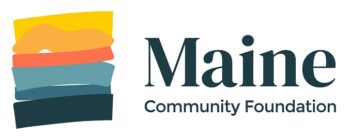Joseph Horn of the Maine Outdoor School instructs Hannah Dyer of George Stevens Academy in the art of saltwater fly tying. A 2018 MaineCF grant supported a series of fly-tying workshops, including this one for Eastern Maine Skippers. Photo Thalassa Raasch
Maine’s coastline becomes a classroom each year for teens who have grown up with the sea in their hearts. Now in its sixth year, the Eastern Maine Skippers Program is teaching students from nine high schools how their generation can help shape the future of fishing communities.
Students focus on a critical question each year as they work with fishermen, scientists, industry professionals, and regulators. This year, classes and field trips center on technology and how it contributes to a safe, healthy, and sustainable fishing industry.
When students gathered in late November for their technology cohort day, they dropped lobster traps with cameras in Northeast Harbor to research fish population and measure trash and pollution. They learned about fishing with gillnets, tried the handcraft of saltwater fly tying, and created original lobster dishes that they named and pitched to classmates.
The Maine Center for Coastal Fisheries (MCCF), a nonprofit based in Stonington, operates the program in collaboration with the Rural Aspirations Project. MaineCF awarded MCCF one of its inaugural Downeast Innovation Grants last year to develop curriculum that emphasizes entrepreneurship and innovation in fishing communities. Other MaineCF funding for Eastern Maine Skippers has come from the Belvedere Traditional Handcrafts Fund and donor-advised funds, including the Robert N. Haskell & Gladys M. Stetson Fund and the Limulus Fund.





